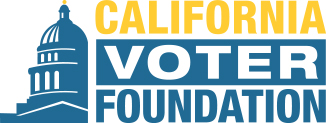Excerpt:
California’s youngest voters are three times more likely to have their mail ballots rejected than voters as a whole, a new study has found, highlighting a problem that could grow as more of those inexperienced voters turn out in November.
A study by the nonpartisan California Voter Foundation of three California counties — Sacramento, San Mateo and Santa Clara — found that in the November 2018 election, voters ages 18-24 made up the smallest number of mail voters of any age group, but had by far the highest number of rejections.
“With young and new voters the high rejection rate persists, even though the state has made a lot of changes to bring it down,” said Kim Alexander, the foundation’s president and author of the report.
The number of rejected ballots is likely to grow in November, if only because the state will try to ease coronavirus pandemic concerns by mailing a ballot to every active voter in the state.
“While the percentage of rejected mail ballots has stayed pretty constant over the years, the number keeps rising as more people vote by mail,” Alexander said.
Cutting the ballot rejection rate for young voters is also likely to remain a problem.
“I’m worried that voting by mail incorporates elements viewed as old-fashioned by young voters,” Alexander said, “whether it’s writing their signatures or even using the mail.”
While mail voting is safe and secure and has plenty of advantages during the pandemic, it comes with its own concerns, she said.
“Voting by mail shifts the responsibility for getting it right from the election officials to the voter,” Alexander said. “Voters need to make sure they know what they’re doing.”
It’s not just young voters who run into problems. Newly registered voters of all ages in the three counties were twice as likely to have their ballots rejected.
In the March 2020 primary, 70% of the 102,428 California ballots that were rejected went uncounted because they either weren’t postmarked by election day or they arrived more than three days after the election. In San Francisco alone, 9,115 of its 9,407 rejected ballots didn’t get to the election office under the deadline.
In Sacramento County, there were 1,514 late ballots in the June 2018 primary. The study by Alexander’s group found that 93% of them were postmarked June 6, the day after the election.
“For some people, the idea is that if you drop your ballot into the mailbox by midnight, you’re good,” Alexander said. That’s not true — if the mail has already been picked up that day, the ballot won’t be postmarked in time.
Late arrival wasn’t the only reason ballots were rejected. In the March 2020 primary, 14,528 ballots statewide weren’t counted because the signature on the ballot envelope didn’t match the one in the voter’s registration file.
That’s an area of concern for young voters, Alexander said.
“A lot of signatures, including those of people who registered at the (Department of Motor Vehicles), were made with a stylus and a signature on a pad or a cell phone and looks very different from a ‘wet’ signature made on a piece of paper,” she said. “People should look at the signature on their driver’s license and make their ballot signature look like that.”
Voters don’t get all the blame for the problems. In the 2018 general election, a startling 40% of the rejected ballots in Sacramento County went uncounted because the signatures didn’t match, compared with 4% in San Mateo County and 10% in Santa Clara County.
The likely reason for Sacramento’s signature problems was a change in procedure in the election office, which for that election did not require “a second review by election staff or an election supervisor of challenged signatures,” the report said.
While most counties require a second or even a third review of a signature before a ballot is tossed out, that’s almost beside the point, Alexander said.
“There’s an absence of statewide regulations to guide signature-checking procedures,” she said. Rules for checking signatures “should not be left up to election officials in each individual county.”
The California secretary of state is preparing those statewide standards with an eye toward having them in place for the Nov. 3 election.
Since 2018, counties have been required to notify voters if their ballots have been rejected because of a missing or mismatched signature, giving them a chance to correct the problem and have their ballots counted.
Advice to voters
The California Voter Foundation suggests some ways voters can ensure their ballots are counted:
Verify your registration status and voter address at voterstatus.sos.ca.gov. Update your registration if you’ve moved or changed your name.
Sign up for BallotTrax at WheresMyBallot.sos.ca.gov to see if your ballot has been counted.
Don’t mix up your ballot envelope with other voters’ envelopes, since there is an individual identification code on each envelope.
Remember to sign and date your ballot envelope before returning it.
If you’re unsure what your registration signature looks like, check your driver’s license or state identification card. If you registered online or at the DMV, that’s the signature on file with the county election office.
Mailing a ballot on election day doesn’t guarantee it will be postmarked by election day. If you’re voting close to election day, return your ballot in person to a drop-off location, a polling place or the county election office.
In the June and November elections in 2018, the study found that 13,543 voters in the three counties were told of their signature problems. Only 7,318 people responded, leading to a correction rate of 54%. (full story)

